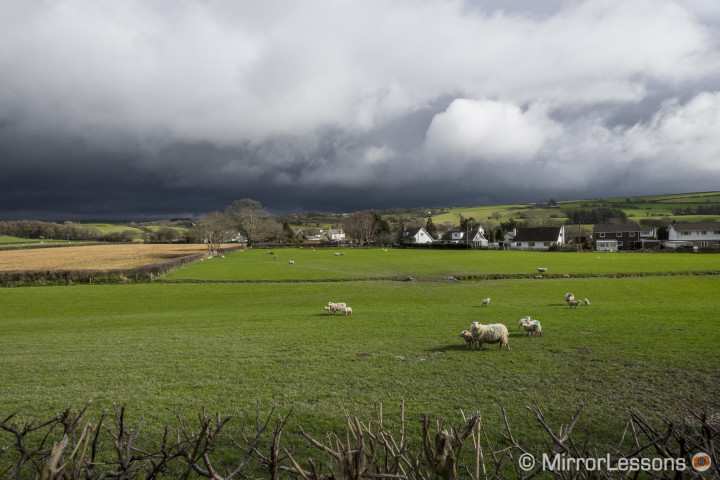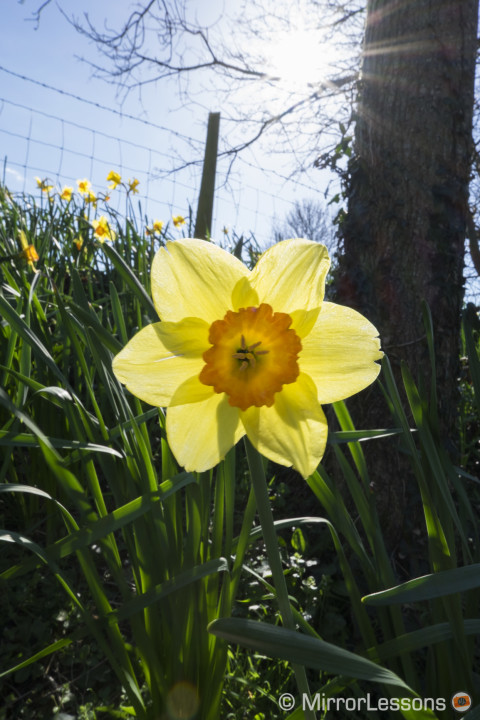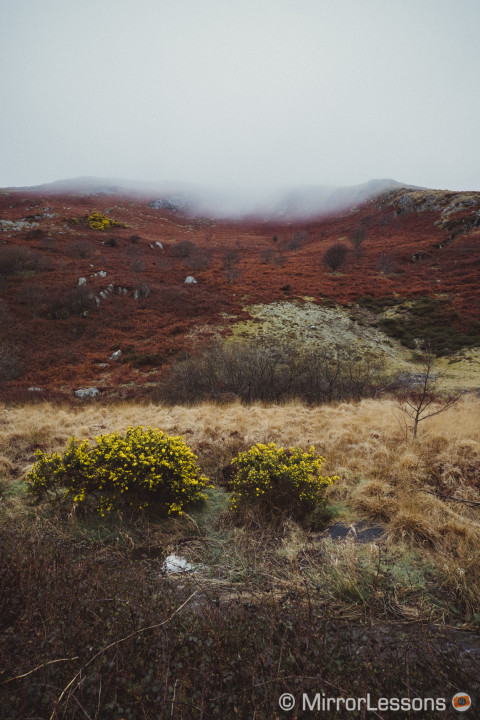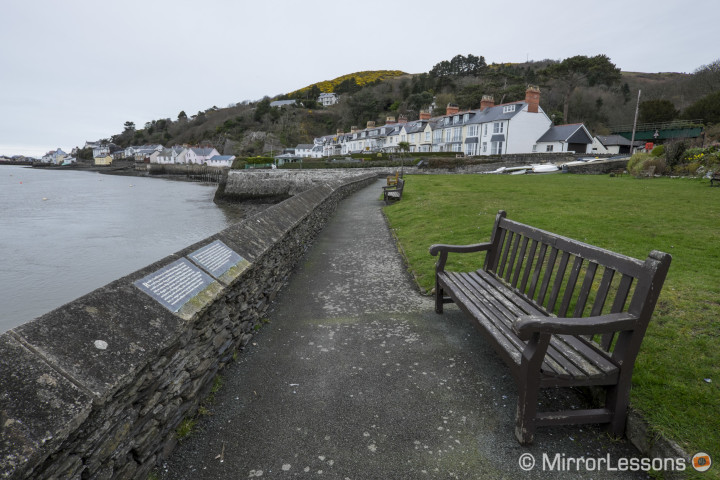While Mathieu has been testing the Sony A7 II and Leica M 240, I’ve been spending my days in the company of two lenses I’ve long wanted to test, the Zeiss Touit 12mm and 32mm. The pair arrived just in time for the Easter weekend, which was by coincidence also one of the warmest and sunniest weekends we’ve experienced since moving here, so there was much to photograph!

The first part of this review deals strictly with the Touit 12mm f/2.8, an ultra wide-angle lens for the APS-C systems from Fujifilm and Sony.
The sample I received was for the Fujifilm X series and I used it on the latest model, the X-T1. Since the optics are identical, all my observations about the Fujifilm version should apply to the Sony version as well, with one exception – the Sony version lacks an aperture ring whereas the Fujifilm version has one.
Build Quality and Design

The Zeiss Touit 12mm (18mm equivalent on full-frame), with its funnel-like shape and large front element, isn’t particularly small compared to many of the primes in the XF range but it remains portable, fairly light and well-balanced on an X body like the X-T1.

It has a nice solid metal body, complete with a plastic lens cap, reversible plastic hood and rubber aperture and focus rings. Zeiss apparently chose rubber over metal because rubber rings aren’t as cold to handle in freezing temperatures. With both a distance and depth of field scale lacking on the body, the markings are scant, featuring only the name of the lens, the full-stop apertures, and the words “Made in Japan.” (Yep, though the lens was designed in Germany, there is about as much German handiwork in this lens as there is in sushi. But don’t worry, most other Zeiss lenses are made there too!)
Now we get to the most annoying feature of this lens: the aperture ring. Not only is it noisy but it moves around so freely that a mere accidental brush against the lens could shift it from f/2.8 to f/22. (I wish I could say this was a complete exaggeration but it’s not.) I was wondering if this problem might be limited to my sample but a quick perusal of a few other reviews convinced me that it is a common issue. If you buy this lens, keep in mind that you’ll have to get into the habit of checking the aperture every time you lift the camera to your eye to shoot.

The focus ring, on the other hand, is wonderfully smooth and precise. Being focus by wire, the focus control isn’t mechanically linked to the moveable lens elements inside the lens but this doesn’t cause any issues. The only real niggle is that both rings are hard to find if your eye is at the viewfinder because the lens barrel and rings feel similar. Had they been designed with a ribbed texture, they would have been easier to find.
Image Quality
If you are looking for a bone to pick with the image quality of the Touit 12mm, you won’t find one. This lens is a quintessential Zeiss through and through.
The results are very sharp throughout the various apertures up until about f/8, and peak between f/4 and f/5.6. Even the fastest aperture of f/2.8 delivers very good sharpness across the frame.

Though not a defining characteristic of this lens (or any wide angle for that matter), the bokeh is fairly nice. It isn’t exactly what I’d call dreamy but that can only be expected from a wide angle. It is a nice addition to a lens with a f/2.8 aperture and fairly close focussing distance of 16.5 cm, as you can isolate subjects and create a visually-appealing composition.

Distortion and vignetting weren’t really an issue despite the ultra wide focal length of this lens. Both are very well-controlled by the camera’s processing engine, which is good news for OOC JPG users. As for the Raw files, the small amount of distortion or vignetting you might notice can easily be manually corrected in Lightroom or any other post-processing software. Sadly there isn’t yet a dedicated lens profile in Lightroom for the Fujifilm version of the Touit 12mm (but there is one for Sony).


It’s hard to comment on flare and chromatic aberration as well, as they are basically non-existent. Thanks to the anti-reflective T* coating, you’ll only see a subtle flare in strongly backlit situations and chromatic aberration didn’t appear once in any of my tests.


Personally speaking, I found the 12mm of the lens marginally too wide for my tastes, but it is very appropriate for architectural and landscape photography. When we used it to photograph a local fair trade shop, for example, I had no trouble including all the most important elements in my shots, even though the shop was very small.
Note: The converging vertical lines have been corrected in Lightroom in two of the images below.
Conclusion
The Zeiss Touit 12mm was, from the start, a curious addition to Fujifilm’s X series line-up. Why? Because, at the time of its release, the XF line-up already had a native 14mm, which cost less, came in a more compact package and was optically superb. And when the XF 10-24mm f/4 came on the scene, the argument to invest in the Touit 12mm became even less convincing.

Unsurprisingly, the strong competition from Fujifilm’s own line-up caused the lens to rapidly depreciate. You can now find it for around $500 less than the original price. While this is bad news for Zeiss, it means that Fujifilm users now have three wonderful wide-angle lenses to choose between and won’t risk breaking the bank.

Would I recommend the Touit 12mm personally? At the current market price, I am far more tempted to say “yes” now than I would have been when it was first released, especially if you are a photographer in need of a prime that is wider than 14mm. However, having been spoilt by the similarly-priced and optically excellent XF 10-24mm (see our review here), it would not be my first choice.
Note: This lens makes more sense for the Sony E-mount system as it lacks a fast ultra-wide prime.
 What I like about the Zeiss Touit 12mm
What I like about the Zeiss Touit 12mm
- Excellent optical quality with great sharpness and colour rendition
- Solid metal body with additional reversible lens hood
- Aperture and focus rings made of rubber instead of metal
- Hardly any flare, distortion or vignetting
- No observable chromatic aberration
- Was expensive but is now more affordable
 What I don’t like about the Zeiss Touit 12mm
What I don’t like about the Zeiss Touit 12mm
- Very noisy aperture ring that moves too freely
- Not weatherproof
- A little on the large side
- Doesn’t really fill a gap in the Fujifilm XF lens system (but does in the Sony E-mount system)




























I didn’t get to try the lens with a filter system, so that’s good to know. Have you tried updating the firmware? Both lenses seem much faster on the X-T1 with the update.
I have both the 12 and 32 Touits – purchased in a bundle deal from B&H last year. Love the quality of the glass. They’re a little slower to focus than the other Fuji lenses I own, but not a deal-breaker on the 12mm, which I use mostly for landscape anyway.
My beef with the 12mm is the flared “collar” on the front of the lens, which prevents a Lee 67mm wide angle adaptor from engaging the filter thread. The collar seems decorative rather than functional (does look gorgeous with the lens hood on!). I have yet to try with a standard Lee 67mm adaptor, but am a bit concerned with the possibility of vignetting from the filter holder with a standard adaptor.
Seems this design may have similar problems with other adaptor rings or other filter holder systems (Cokin, Formatt HiTech, Tiffen, etc).
Have you had a chance to use the Rokinon (or whatever it’s called where you are) 12 mm? It’s WAY cheaper, a stop faster (which is amazing for such a small wide lens), and the lack of AF isn’t altogether relevant to me because it’s so wide it’s easy to get everything in focus.
Anyway, I agree this occupies a weird place in the Fuji lineup. Until the Rokinon 12 it was the only ultrawide prime for Sonys.
Thank you for the review. I have both the 12 and 32 Touit’s for my Sony A6000. My only complaint is that I think they are a little slow to lock focus. I understand there is a firmware upgrade for the lenses that require them being sent back to Zeiss. The firmware upgrade is supposed to increase the focus lock.
I do like these lenses, and prices have come down.
That’s very interesting, Jay. Would you say the resistance on both is exactly the same or is there a slight difference? I don’t think the problem is limited to my lens as Colin Peddle of Petapixel and Rico Pfirstinger cited the issue as well but it could be that it affects only a limited number of samples.
I have both Touits, I don’t have any problem with the aperture rings on either, I find the movement to be smooth but just right. Maybe you have a problem with yours and should contact Zeiss? I’ve seen large prints comparing the Zeiss and Fuji rival lenses, quality is equally awesome. I’m definitely glad I have the 12 over the 10-24 because of the extra stop, and plus I find even the kit zoom awkward to use with the zoom and aperture rings so close. One perk to the Fuji 14 however is the pullout focus clutch which automatically switches to manual focus as on the 23. My Zeiss 12 is used at weddings in tight quarters and dances, and focuses FAST even in low light and with moving subjects. My 32 or 23 are on my primary body and 56 on my backup, but they are all wonderful for different aspects of weddings, and architecture.